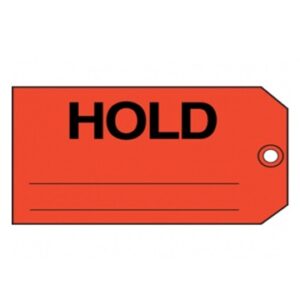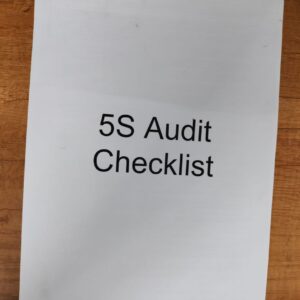Description
The TPM White Tag Operator is a key component in the Total Productive Maintenance (TPM) system, designed to help streamline maintenance activities and ensure that equipment runs at peak performance. TPM is a proactive approach that aims to maximize equipment efficiency and minimize downtime through regular maintenance, operator involvement, and continuous improvement. The White Tag is specifically used in this process to help identify equipment status, signal maintenance needs, and support preventive measures in a clear and standardized manner.
Key Features and Functions of the TPM White Tag Operator:
- Clear Equipment Status Identification: The TPM White Tag Operator helps in clearly marking and identifying the current status of equipment or machinery. When a machine or equipment is under maintenance, the operator places a white tag on it. This acts as a visual cue that the equipment has been inspected, and it’s either awaiting repair, maintenance, or further evaluation.
- Preventive Maintenance Support: One of the core objectives of TPM is to shift from reactive maintenance (fixing problems as they arise) to preventive maintenance (addressing potential issues before they cause failures). The white tag is part of a system that encourages operators to document and communicate maintenance needs or issues before they lead to breakdowns.
- Operator Involvement in Maintenance: TPM places a strong emphasis on operator involvement, with operators actively engaged in routine checks and minor maintenance tasks. The white tag system empowers operators to track equipment condition and directly contribute to the overall reliability of the equipment by identifying and addressing potential issues early.
- Standardization: The use of white tags brings a level of standardization to equipment maintenance. It allows operators, technicians, and maintenance teams to instantly recognize the status of the machinery, preventing confusion or miscommunication. The tags can include detailed information about the type of maintenance required, the date of inspection, or any specific observations related to the equipment.
- Visual Communication: As part of a lean and efficient work environment, visual communication is critical. The white tag acts as an easily visible indicator to everyone on the floor. Whether it’s maintenance personnel, supervisors, or operators, the tag helps ensure everyone understands the status of the equipment without needing additional explanations.
- Tracking Maintenance History: The white tag operator system can also help track the history of maintenance actions taken on a particular piece of equipment. This allows for better decision-making regarding when to conduct major overhauls or replacements, based on a detailed history of previous maintenance work.
- Reduction in Equipment Downtime: By promoting regular checks and early identification of potential problems, the white tag system helps to prevent unplanned downtime and costly emergency repairs. The proactive nature of the system leads to increased equipment uptime, ultimately improving productivity.
- Alignment with TPM Goals: The use of white tags aligns with the broader goals of Total Productive Maintenance, including increasing Overall Equipment Effectiveness (OEE), enhancing operator skill levels, reducing downtime, and improving maintenance processes.
Benefits of TPM White Tag Operator:
- Enhanced Communication: Simplifies communication among team members about the status of equipment, leading to faster problem identification and resolution.
- Increased Equipment Longevity: Regular preventive maintenance prevents equipment failure, leading to longer operational lifespans for machinery.
- Higher Efficiency: Operators and maintenance personnel can act on issues promptly, reducing the likelihood of machine breakdowns and improving productivity.
- Improved Operator Engagement: Encourages operators to actively participate in the maintenance process, contributing to a culture of continuous improvement.
- Better Maintenance Planning: With a detailed log of equipment issues and maintenance activities, organizations can optimize their maintenance schedules and reduce unnecessary downtime.









Reviews
There are no reviews yet.